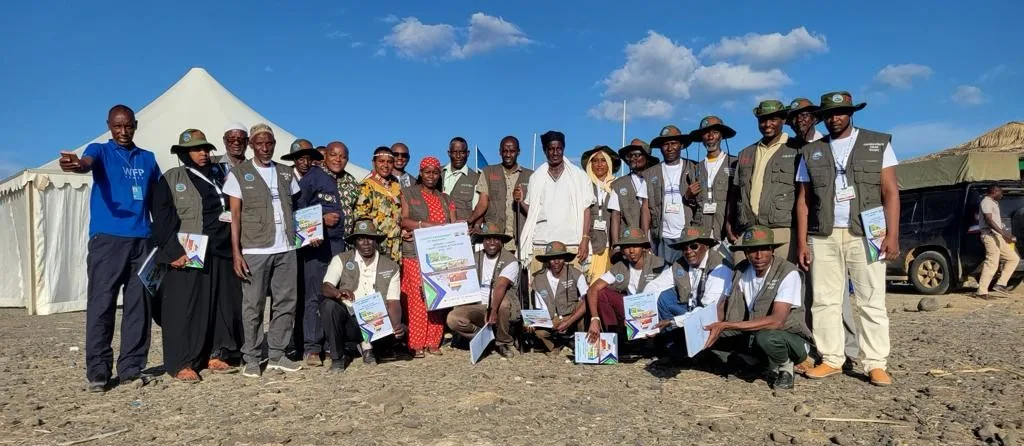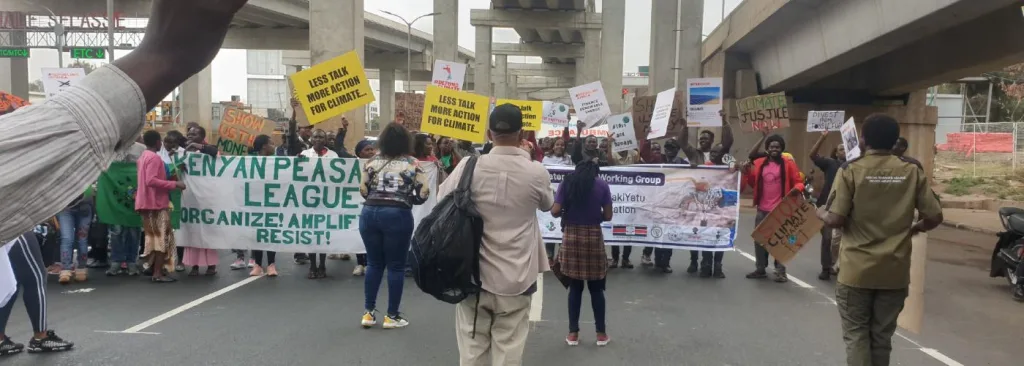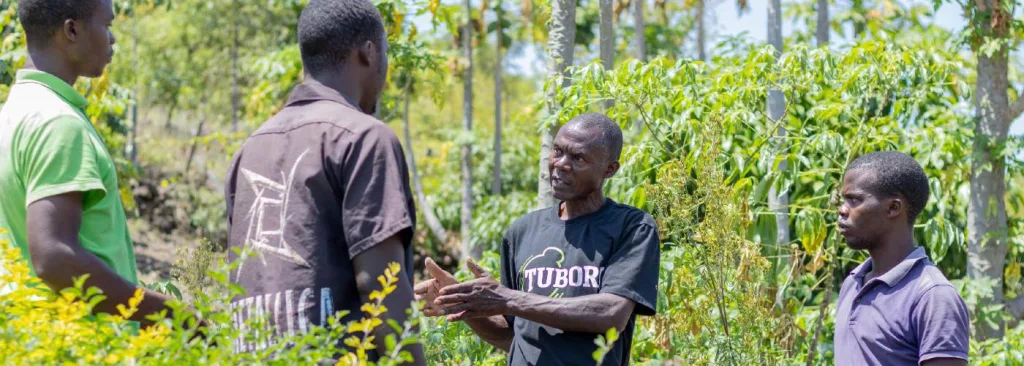For long, climate change response processes and strategies in Kenya have not included active, targeted participation and/or contribution of Indigenous people, local communities, and fisher folks. However, this all changed when Marsabit County launched its first community-led and -centered climate change action plan in Loiyangalani, home to the El Molo community.
The Action Plan (2023-2027) was launched on November 25 by President William Samoei Ruto during the Lake Turkana Cultural Festival. PACIDA, with support from Hivos through its Voices for Just Climate Action program, helped develop the plan through a Participatory Climate Risk Assessment (PCRA ). This is the first time the county conducted a PCRA, which helps design the plan based on consultations with the Indigenous people and local communities who constitute the largest population of Marsabit.
Extreme susceptibility to climate impacts
Marsabit County, Kenya’s largest county, is characterized by extreme susceptibility to the impacts of climate change. This is because most livelihoods in the county rely on climate-sensitive sectors like agriculture, livestock, water, trade, tourism, forestry, and wildlife conservation. Climate change thus ensures that recurring droughts, ethnic conflicts over control of natural resources, erratic rainfall patterns, and floods will continue impacting livelihoods and community assets in the county. Only local, urgent, and focused actions can remedy the situation.
A long uphill battle
Marsabit County’s first Climate Change Action Plan (2018-2022) recommended the promotion of climate-smart agriculture, livelihood diversifications, water catchment protection, building resilience of at-risk communities, rangeland rehabilitation, stakeholders’ awareness on climate change, and mainstreaming adaptation actions across all county departments. These would be important ways of reducing vulnerability, enhancing adaptative capacity, and building resilience of the communities in the county.
However, during that same period, the county was hit hard by climate hazards even worse than those foreseen in the first action plan. Among these were the three-year Horn of Africa drought, locust plagues, and terrible floods that wiped out thousands of livestock in the county. Then the Covid-19 pandemic caused the county’s economy to plummet while poverty levels skyrocketed. This led to a re-evaluation of the plan that resulted in a much-revamped second generation.
Marsabit County Climate Change Action Plan (2023-2027)
Following input from local communities, the current Marsabit County Climate Change Action Plan identifies specific areas of investment to build resilience to climate change in the county. These areas include drought mitigation (investing in water harvesting and ground water structures); climate smart agriculture, diversification of livelihoods, and resource-based conflicts (mobilizing investment in water harvesting and ground water structures); participatory rangeland management and peace-building initiatives, (financing proper land management – contours, terraces, bridges – and promotion of participatory rangeland management), and environmental protection of soil (sustainable waste management and soil and water conservation to improve soil moisture content, soil water retention potential and vegetation cover for degraded rangelands).
The plan also notes that large numbers of people and livestock in the county are vulnerable to diseases. So it recommends investment in controlling livestock movement (grazing plans), promotion of participatory rangeland management, mass vaccination of livestock, and stocking health centers with suitable medicines. Major flash flooding in the county is another hazard identified by the action plan. To remedy this, the plan proposes investment in a county climate information system that would gather, analyze and communicate early warning information to help pastoral communities take timely, appropriate measures to build capacity and adapt.
Presidential pledge
At the launch of the plan on November 25, H.E. President Ruto pledged to allocate 500 million Kenya shillings to replace livestock lost to the three-year Horn of Africa drought: “We recognize the impacts of this drought on the people of Marsabit … and as a national government, we will put in 500 million to support restocking given the losses in livestock that drought caused you as a region.”
In addition to the action plan
But Marsabit County’s ability to cope with the impacts of climate change is also affected by many other underlying factors. These include marginalization, poverty, relatively weak institutions, poor infrastructure, lack of information, poor access to financial services, and resource-based conflicts.
So additional policies and measures for adaptation to climate change are also needed. For example, a new spatial plan for the county. Likewise, investment in data generation, processing and storage, especially in this era of limits to adaptation (loss and damage), is critical. This would enable the county to not only support local communities in the push for climate justice, but also to back Kenya’s loss and damage negotiation processes with empirical evidence on cumulative economic and non-economic losses caused by climate change.
Women and girls must be taken into account
While the action plan goes a long way in addressing some of the pressing climate change needs in Marsabit County, it does not specifically address gender issues. Research has shown that women and girls are disproportionally affected by the effects of climate change, and therefore adequate attention should be given to them. The action plan will not produce the desired results if it does not pay significant attention to this during its implementation.







